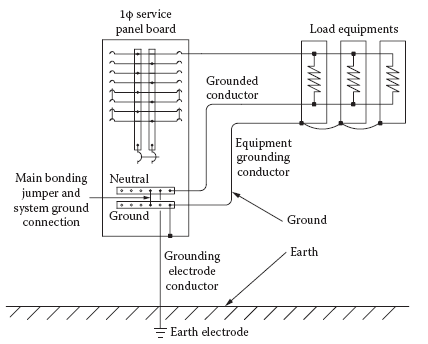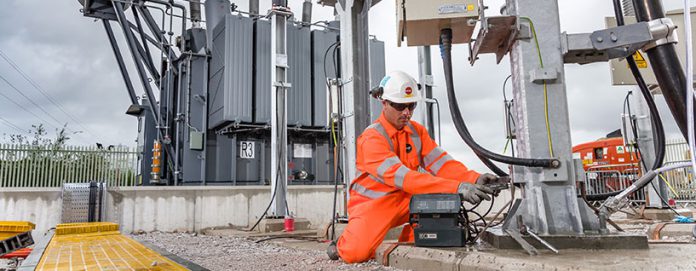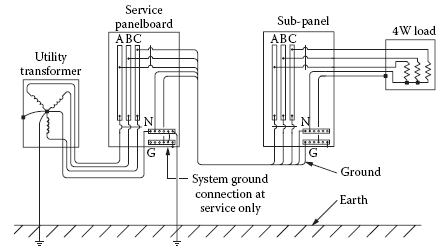Reza Hajiha /Senior Electrical Engineer /Sharif University of Technology
Paper – Facility Grounding Practices
The attention given to the design and installation of a facility ground system is a key element in the day-today reliability of the plant. A well-designed and -installed ground network is invisible to the engineering staff. A marginal ground system, however, will cause problems on a regular basis. Grounding schemes can range from simple to complex, but any system serves three primary purposes:
- Provides for operator safety
- Protects electronic equipment from damage caused by transient disturbances
- Diverts stray radio frequency energy from sensitive audio, video, control, and computer equipment
Most engineers view grounding mainly as a method to protect equipment from damage or malfunction.
However, the most important element is operator safety. The 120 or 208 Vac line current that powers most equipment can be dangerous — even deadly — if handled improperly. Grounding of equipment and structures provides protection against wiring errors or faults that could endanger human life.
Disturbance is lightning, power-system switching activities, or faults in the distribution network. Proper grounding is also a key element in preventing radio frequency interference in transmission or computer equipment. A facility with a poor ground system can experience RFI problems on a regular basis. Implementing an effective ground network is not an easy task. It requires planning, quality components, and skilled installers. It is not inexpensive. However, proper grounding is an investment that will pay dividends for the life of the facility.
Any ground system consists of two key elements: (1) the earth-to-grounding electrode interface outside the facility, and (2) the ac power and signal-wiring systems inside the facility.
Terms and Codes
A facility can be defined as something that is built, installed, or established to serve a particular purpose [1].
A facility is usually thought of as a single building or group of buildings. The National Electrical Code (NEC) uses the term premises to refer to a facility when it defines premises wiring as the interior and exterior (facility) wiring, such as power, lighting, control, and signal systems. Premises wiring includes the service and all permanent and temporary wiring between the service and the load equipment. Premises wiring does not include wiring internal to any load equipment.
The Need for Grounding
The Institute of Electrical and Electronics Engineers (IEEE) defines grounding as a conducting connection, whether intentional or accidental, by which an electric circuit or equipment is connected to the earth or to some conducting body of relatively large extent that serves in place of the earth. It is used for establishing and maintaining the potential of the earth (or of the conducting body) or approximately that potential, on conductors connected to it, and for conducting ground current to and from the earth (or the conducting body) [2]. Based on this definition, the reasons for grounding can be identified as:
Personnel safety by limiting potentials between all noncurrent-carrying metal parts of an electrical distribution system
Personnel safety and control of electrostatic discharge (ESD) by limiting potentials between all noncurrent-carrying metal parts of an electrical distribution system and the Earth • Fault isolation and equipment safety by providing a low-impedance fault return path to the power source to facilitate the operation of over current devices during a ground fault.
The IEEE definition makes an important distinction between ground and earth. Earth refers to mother earth, and ground
refers to the equipment grounding system, which includes equipment grounding conductors, metallic raceways, cable armor, enclosures, cabinets, frames, building steel, and all other noncurrent-carrying metal parts of the electrical distribution system.
There are other reasons for grounding not implicit in the IEEE definition. Overvoltage control has long been a benefit of proper power-system grounding and is described in IEEE Standard 142, also known as the Green Book [3]. With the increasing use of electronic computer systems, noise control has become associated with the subject of grounding and is described in IEEE Standard 1100, the Emerald Book. [4].
Personnel safety is achieved by interconnecting all noncurrent-carrying metal parts of an electrical distribution system and then connecting the interconnected metal parts to the earth [5]. This process of interconnecting metal parts is called equipment grounding and is illustrated in Figure 1, where the equipment grounding conductor is used to interconnect the metal enclosures. Equipment grounding insures that there is no difference of potential, and thus no shock hazard, between noncurrent-carrying metal parts anywhere in the electrical distribution system. Connecting the equipment grounding system to earth insures that there is no difference of potential between the earth and the equipment grounding system. It also prevents static charge buildup.
System Grounding
System grounding, which is also illustrated in Figure 1, is the process of intentionally connecting one of the current-carrying conductors of the electrical distribution system to ground [5]. The figure shows the neutral conductor intentionally connected to ground and the earth. This conductor is called the grounded conductor because it is intentionally grounded. The purpose of system grounding is overvoltage control and equipment safety through fault isolation. An ungrounded system is subject to serious over voltages under conditions such as intermittent ground faults, resonant conditions, and contact with higher voltage systems. Fault isolation is achieved by providing a low-impedance return path from the load back to the source, which will ensure operation of over current devices in the event of a ground fault. The system ground connection makes this possible by connecting the equipment grounding system to the low side of the voltage source. Methods of system grounding include solidly grounded, ungrounded, and impedance grounded.
Solidly grounded means that an intentional zero-impedance connection is made between a current- carrying conductor and ground. The single-phase (1) system shown in Figure 1, is solidly grounded. A solidly grounded, three-phase, four-wire, wye system is illustrated in Figure 2. The neutral is connected directly to ground with no impedance installed in the neutral circuit. The NEC permits this connection to be made at the service entrance only [6]. The advantages of a solidly grounded wye system include reduced magnitude of transient over voltages, improved fault protection, and faster location of ground faults. There is one disadvantage of the solidly grounded wye system. For low-level arcing ground faults, the application of sensitive, properly coordinated, ground-fault protection (GFP) devices is necessary to prevent equipment damage from arcing ground faults. The NEC requires arcing ground-fault protection at 480 Y/277 V services, and a maximum sensitivity limit of 1200 A is permitted. Severe damage is less frequent at the lower voltage 208 V systems, where the arc may be self-extinguishing

Figure 2. Solidly grounded wye power system.
REFERENCE
1- Webster’s New Collegiate Dictionary.
2- IEEE Standard 100, Definitions of Electrical and Electronic Terms, IEEE, New York.
3-IEEE Standard 142, “Recommended Practice for Grounding Industrial and Commercial Power Systems,” IEEE, New York.
4- IEEE Standard 1100, “Recommended Practice for Powering and Grounding Sensitive Electronics Equipment,” IEEE, New York, 1992.
5- DeWitt, W. E., “Facility Grounding Practices,” in The Electronics Handbook, Jerry C. Whitaker (Ed.), CRC Press, Boca Raton, FL, pp. 2218–2228, 1996.
6- NFPA Standard 70, “The National Electrical Code,” National Fire Protection Association, Quincy, MA, 1993.

رضا حاجیها- کارشناس ارشد برق – دانشگاه صنعتی شریف


















